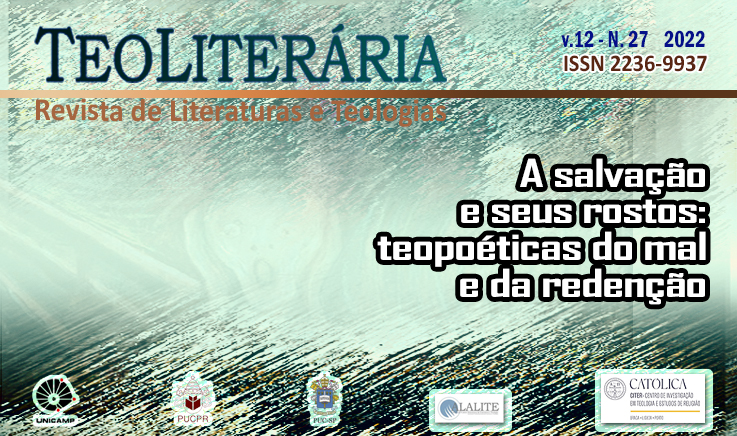“Madre del Dolor” – “Madre de los Dolores y Manto Protector de la Virgen”
Abismos del mal y teopoética de la redención
DOI:
https://doi.org/10.23925/2236-9937.2022v27p43-61Abstract
The image of the Mother of Sorrows is deeply inscribed in Christian memory and is an important expression of its iconography, mainly from the medieval scenes of crucifixion in sculpture or painting; This motivation has also accompanied the various missionary processes. “Under the cross, from which the Lord hangs, you are now standing, woman, surrounded by sadness. ...He who was born to make you king, now reigns from the cross over all the earth. You are with him and you carry the sword in your heart, Mother of sorrow”, is the translation of the medieval poem “Stabat mater” by the German poet Maria Luise Thurmair from 1940. Mary on the Cross is the Mother of Sorrows, to whom, before the suffering of the Son, the sword pierces his heart; She is also the “Pietà”, the Mother whose pain at the death of her Son, whose body she holds in her arms, is an expression of an impressive dignity. By making this image their own today – as, for example, in the Station of the Cross of the Church of the town of Arcatao in El Salvador, on the border with Honduras in the so-called “Red Zone” of the times of the civil war – , people also offer each other this dignity. A scene from the celebration of the Good Friday liturgy in the San Cayetano Chapel, in the diocese of Merlo-Moreno –in the extreme northeast of Buenos Aires– has remained etched in my memory: we, a group of German theologians, had participated in the Via Crucis which, similar to a rendition of the Passion, was prepared by young people from the community. At the time of the adoration of the Cross, an old woman, small, thin, fragile, played the role of Mary; she stands next to the cross and receives the cross with the body of Christ, where the participants of the liturgy pasted a word or an image of what her cross was: unemployment, loneliness, sexual violence, abuse, apathy, lack of opportunities educational etc. Mary receives the pains brought by the women, men, children, and even guests from the far north gathered here; she mourns them and then carries them to the grave. In this image of the Mother of Sorrows, pain is concentrated, suffering in the face of violence and hardship, in the face of the abysses of evil that have accumulated and continue to accumulate in history and that no theodicy can finish “explaining”. Mary, the mother, is standing here next to the Son at the moment when everything seems to be "turned off", holding the body in her arms. She herself carries a "sword" through her heart, she herself is completely affected by this pain of the Son. Passion and compassion touch here, both are condensed in all vulnerability as the deepest expression of human dignity. In popular religiosity and its different forms – in pictorial translations, in representations of the Passion and its staging, in poems and music – a type, a symbol, has developed here, in which people – united along of the centuries – have given an expression to the Christian faith and its dimension of redemption, especially in the face of all the abysses of evil.
Published
How to Cite
Issue
Section
License
Copyright (c) 2022 Teoliteraria - Journal of Literatures and Theologies (On Line) ISSN 2236-9937

This work is licensed under a Creative Commons Attribution 4.0 International License.
TeoLiteraria – Journal of Literatures and Theologies owns the copyright of all published material. The whole reproduction of the articles of this Journal in other publications or for any other purpose, by any means, requires a written permission of the editor of this journal. Partial reproductions of articles (abstracts, more than 500 words text, tables, figures and other illustrations) must have a permission written by the publisher and the authors.

